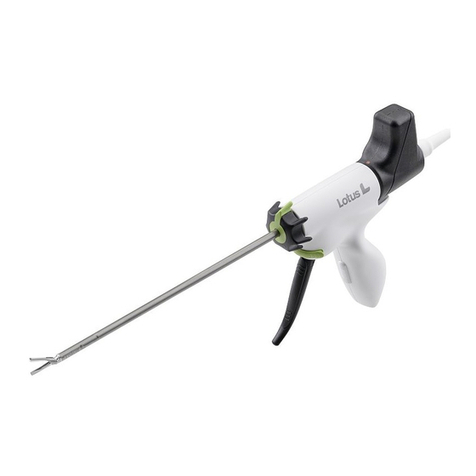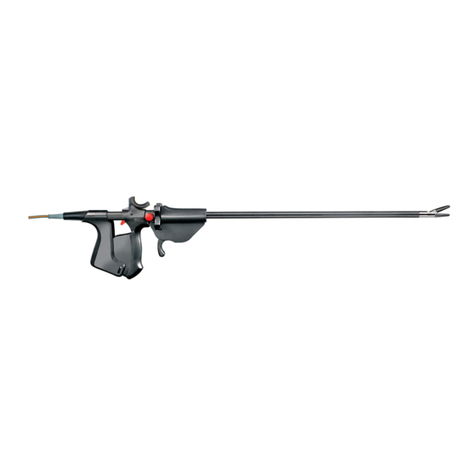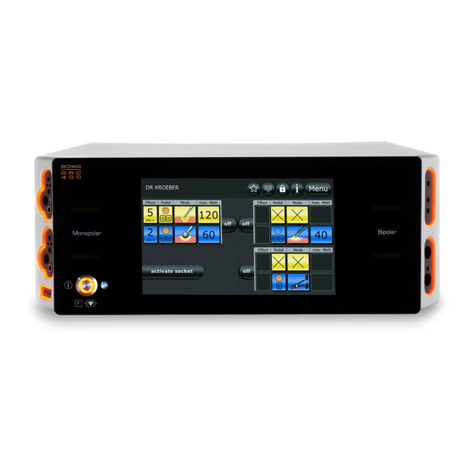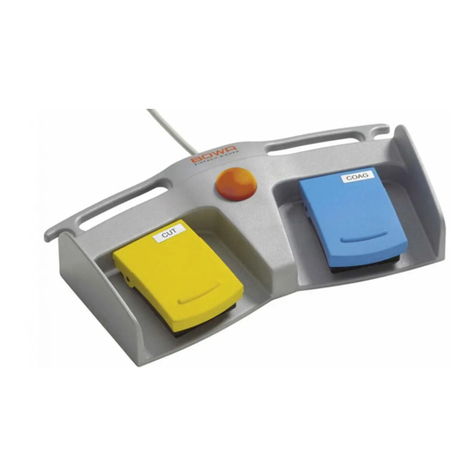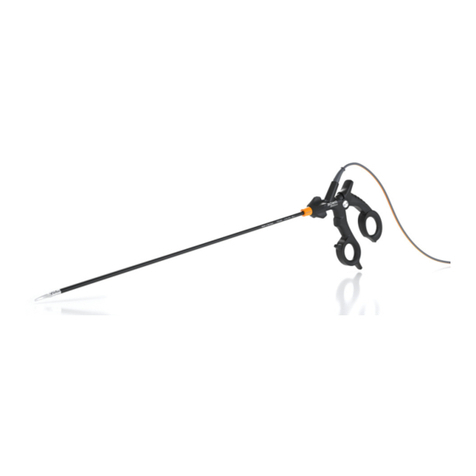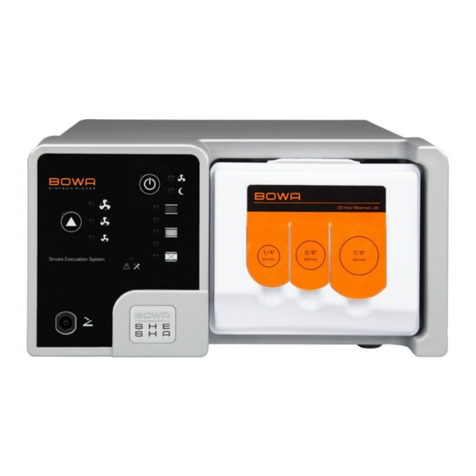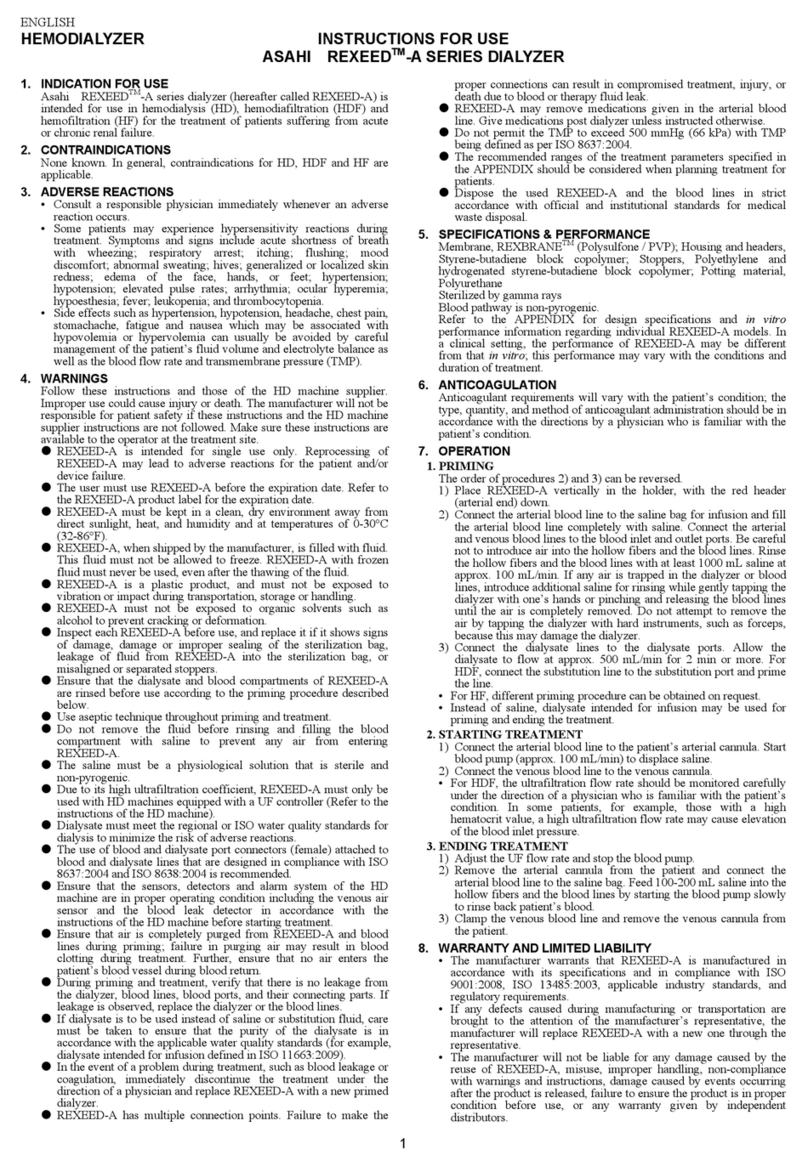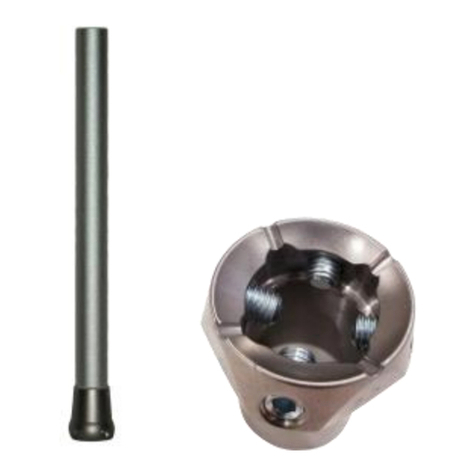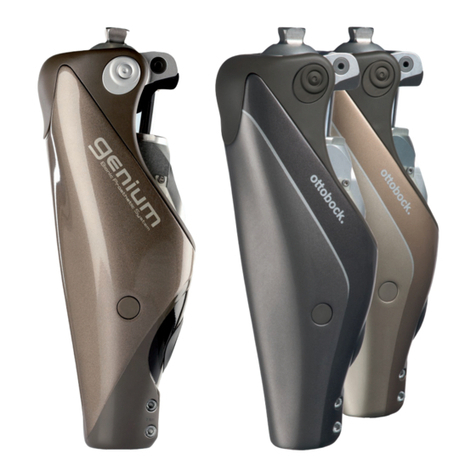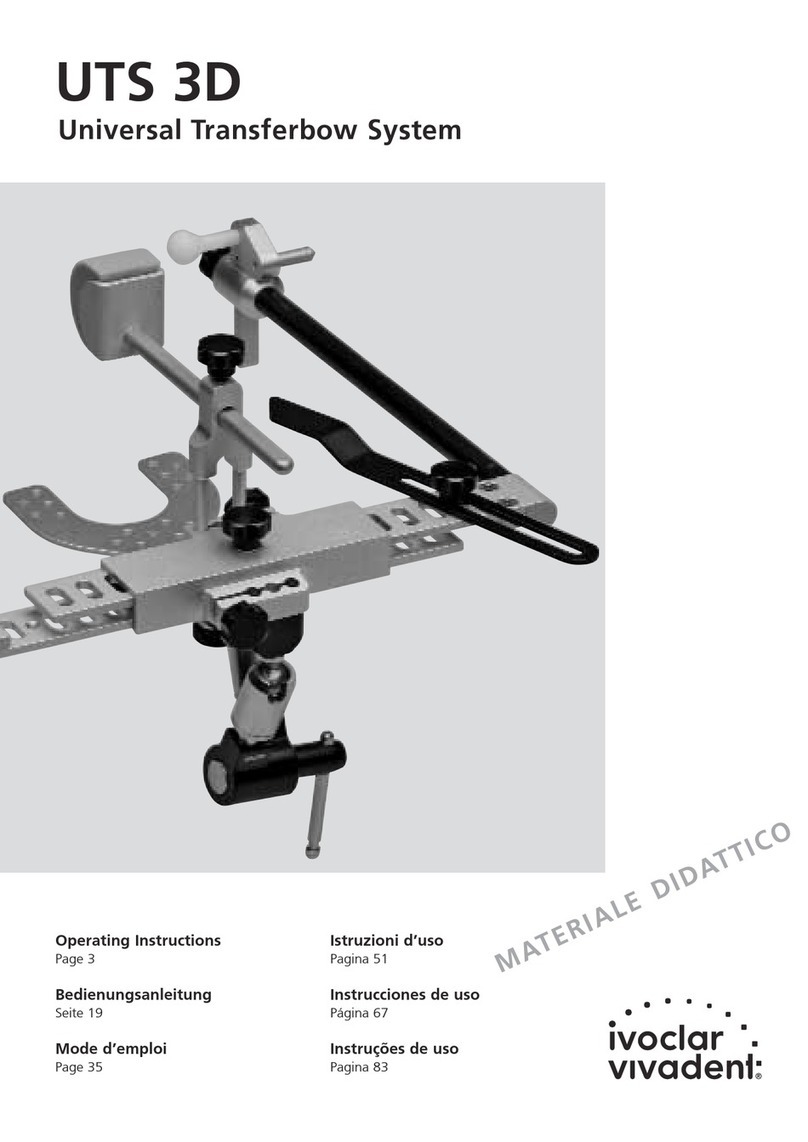Bowa ARC 250 User manual

OPERATING MANUAL
ELECTROSURGICAL UNIT


900-301_IFU-V2.2_11316-S0-20131023-EN Operating Manual ARC 250 / 303 3

4Operating Manual ARC 250 / 303 900-301_IFU-V2.2_11316-S0-20131023-EN

900-301_IFU-V2.2_11316-S0-20131023-EN Operating Manual ARC 250 / 303 5

Legend
6Operating Manual ARC 250 / 303 900-301_IFU-V2.2_11316-S0-20131023-EN
Legend
1
"Monopolar Cut" indicator arrow (yellow)
2
"Monopolar Cut" 7-segment display
3/4
Power limitation for monopolar cutting
5/6
Key for the degree of scabbing during monopolar cutting
7
"Monopolar Cut" blend factor indicator
Blend settings 0–9
8
"Monopolar Coag" indicator arrow (blue)
9
"Monopolar Coag" 7-segment display
10/11
Power limitation for monopolar coagulation
12
Key/indicator for "Moderate Coagulation" current mode
13
Key/indicator for "Forced Coagulation" current mode
14
Key/indicator for "Spray Coagulation" current
15
Indicator on main display: programs and information
Current indicator on 2-line display
16/17
Program key
18
Error status indicator
19
EASY monitoring for one-piece neutral electrode (EASY
one-piece monitoring)
20
EASY monitoring for split neutral electrode (EASY split
monitoring)
21
Indicator arrow for "Bipolar Coag" (blue)
22
"Bipolar Coag" 7-segment display
23/24
Power limitation for bipolar coagulation
25
Key/indicator for "Bipolar Output" FOOT SWITCH
(socket connector 31)
Only for bipolar coagulation!
26
Key/indicator for AUTOSTART "Bipolar Output" (socket
connector 31)
Only for bipolar coagulation!
27
On/off switch
28
Socket for the neutral electrode (NE)*
29
Socket connector for monopolar instruments with hand
switch* (only for ARC 303)
30
Socket connector for monopolar instruments with hand or
foot switch, Bovie connector or 4 mm monopolar endoscope
connector, or 3-pin connector*
31
Socket connector for bipolar instruments with foot switch or
AUTOSTART*
*
Application part F according to IEC 60601-1

Legend
900-301_IFU-V2.2_11316-S0-20131023-EN Operating Manual ARC 250 / 303 7
Back side of ARC 250/303
32
Socket connector for foot switch for sockets 30 and 31
33
Fibre optic signal output socket connector
(with ARC 250/303 with GastroCut option)
34
Fibre optic signal output socket connector
(with ARC 250/303 with GastroCut option)
35
Rating label
36
Connection for equipotential bonding
37
Power connection for cooling device connector

Legend
8Operating Manual ARC 250 / 303 900-301_IFU-V2.2_11316-S0-20131023-EN

Contents
900-301_IFU-V2.2_11316-S0-20131023-EN Operating Manual ARC 250 / 303 9
Contents
Legend .........................................................................................................................................................6
1. Using this operating manual .........................................................................................................13
1.1. Revision index...................................................................................................................13
1.2. Validity...............................................................................................................................13
1.3. Other applicable documents .............................................................................................13
1.4. Icons and labeling .............................................................................................................14
1.4.1. Structure of warning instructions .......................................................................14
1.4.2. Risk levels in the warning instructions...............................................................14
1.4.3. Tips....................................................................................................................14
1.4.4. Other icons and labeling....................................................................................15
2. Safety...............................................................................................................................................16
2.1. Intended use .....................................................................................................................16
2.2. General safety instructions ...............................................................................................17
2.3. Personal safety instructions..............................................................................................18
2.3.1. Ambient conditions ............................................................................................18
2.3.2. Patients with pacemakers..................................................................................18
2.3.3. Safe positioning of the patient ..........................................................................19
2.3.4. Correct connection of the HF device .................................................................19
2.3.5. Correct use of the HF device.............................................................................19
2.3.6. Adjusting the settings of the HF device and use of the accessories.................20
2.4. Device-related safety instructions.....................................................................................21
2.5. Safe handling (general instructions) .................................................................................21
2.5.1. Surgical environment: prevention of explosions/combustion ............................22
2.5.2. Application of the neutral electrode ...................................................................22
3. Functionality ...................................................................................................................................25
3.1. Monopolar modes .............................................................................................................25
3.1.1. "Cut" mode.........................................................................................................25
3.1.2. "Moderate Coag" mode .....................................................................................25
3.1.3. "Forced Coag" mode .........................................................................................26
3.1.4. "Spray Coagulation" mode ................................................................................26
3.1.5. "GastroCut" mode..............................................................................................27
3.2. Bipolar modes ...................................................................................................................28
3.3. Activation and alarm signals in monopolar and bipolar mode ..........................................29

Contents
10 Operating Manual ARC 250 / 303 900-301_IFU-V2.2_11316-S0-20131023-EN
3.4. Emergency shutoff ............................................................................................................29
3.5. Monitoring functions..........................................................................................................29
3.5.1. Self-test..............................................................................................................29
3.5.2. Cyclical test during operation ............................................................................29
3.6. ARC Control technology ...................................................................................................30
3.7. Neutral electrode monitoring.............................................................................................30
3.7.1. General information...........................................................................................30
3.7.2. EASY neutral electrode monitoring (EASY monitoring) ....................................31
3.8. Foot switch........................................................................................................................31
3.9. Memory functions..............................................................................................................31
4. Description......................................................................................................................................32
4.1. Icons on the device ...........................................................................................................32
4.1.1. Rating label........................................................................................................32
4.2. Scope of delivery ..............................................................................................................33
4.3. Components required for operation ..................................................................................33
4.4. Operating conditions .........................................................................................................33
5. Preparation......................................................................................................................................34
5.1. Setting up the HF device...................................................................................................34
5.2. Switching on the HF device ..............................................................................................35
5.3. Connecting instruments ....................................................................................................35
5.3.1. Instruments for monopolar applications ............................................................36
5.3.2. Instruments for bipolar applications...................................................................36
5.3.3. Connecting the foot switch ................................................................................36
5.3.4. Assigning a foot switch output...........................................................................37
5.4. Functional test...................................................................................................................37
5.4.1. Autotest function................................................................................................37
5.4.2. Functional test execution...................................................................................37
5.4.3. Actions in case of problems...............................................................................38
5.4.4. EASY neutral electrode electrode monitoring (EASY monitoring) ...................38
6. Operation.........................................................................................................................................39
6.1. Program overview .............................................................................................................39
6.2. Basic program settings .....................................................................................................40
6.2.1. Calling up a program .........................................................................................40
6.2.2. Changing the program.......................................................................................40
6.3. Program descriptions........................................................................................................41

Contents
900-301_IFU-V2.2_11316-S0-20131023-EN Operating Manual ARC 250 / 303 11
6.3.1. Program 0 "Standard"........................................................................................41
6.3.2. Program 1 "Macro" ............................................................................................41
6.3.3. Program 2 "Micro" .............................................................................................41
6.3.4. Program 3 "Resection" ......................................................................................41
6.3.5. Program 4 "Argon" (only with GastroCut option)...............................................42
6.3.6. Program 5 "Argon-Flex" (only with GastroCut option).......................................42
6.3.7. Program 6 "Gastro LOOP" (only with GastroCut option) ..................................43
6.3.8. Program 7 "Gastro KNIFE" (only with GastroCut option)..................................44
6.4. Menu programs.................................................................................................................45
6.4.1. Overview............................................................................................................45
6.4.2. Menu program 1 "Set Language" ......................................................................46
6.4.3. Menu program 2 "Sound Level".........................................................................46
6.4.4. Menu program 3 "Forced Coag Mode"..............................................................46
6.4.5. Menu program 3A "GastroCut-Modes"..............................................................47
6.4.6. Menu program 4 "Show Prev Inf-No" ................................................................48
6.4.7. Menu program 5 "Hide Fix Prog".......................................................................48
6.4.8. Menu program 6 "Autostart Delay"....................................................................49
6.4.9. Menu program 7 "Edit Prog Names" .................................................................49
6.4.10. Menu program 8 "Restore Programs" ...............................................................50
6.4.11. Menu program 9 "Panel Check" ........................................................................50
7. Detecting and correcting faults ....................................................................................................51
7.1. System errors....................................................................................................................51
7.1.1. Error list .............................................................................................................51
7.2. Error Display in EASY monitoring.....................................................................................55
8. Preparation......................................................................................................................................56
8.1. Disinfection and cleaning..................................................................................................56
9. Maintenance and repair .................................................................................................................57
9.1. Maintenance .....................................................................................................................57
9.1.1. Safety inspection ...............................................................................................57
9.2. Repairs..............................................................................................................................58
9.3. Technical service ..............................................................................................................59
10. Storage ............................................................................................................................................60
11. Technical specifications................................................................................................................61
11.1. Technical specifications of ARC 250 and ARC 303 HF devices ......................................61
11.2. Power, voltage and current charts ....................................................................................66

Contents
12 Operating Manual ARC 250 / 303 900-301_IFU-V2.2_11316-S0-20131023-EN
12. Accessories and replacement parts.............................................................................................85
13. EMC..................................................................................................................................................86
13.1. Guidelines and manufacturer's declaration in accordance with IEC 60601-1-2,
Section 6.8.3.201 ..............................................................................................................86
14. Disposal...........................................................................................................................................90

1 Using this operating manual
900-301_IFU-V2.2_11316-S0-20131023-EN Operating Manual ARC 250 / 303 13
Pos: 1 /6 79-BOWA/HF -Geräte/ ARC 3 00/350/0 L egende/U E_Legende @4\ mod_126 10402440 69_6.doc @ 34330@
Pos: 3 / 679-B OWA/HF- Geräte/ ARC 3 00/350/1 U mga ng mi t/U mgang mitdieser Gebrauchsanweisung @ 4\mod_1261040269 100_6.d oc @ 34 349 @ 1
1. Using this operating manual
This operating manual is part of the device.
BOWA-electronic GmbH & Co. KG, referred to in the following simply as
BOWA, assume no liability nor provide any warranty whatsoever for
damage and consequential damages that arise due to non-compliance
with the operating manual.
Read the operating manual carefully and thoroughly before using
this device.
Store the operating manual in a safe place throughout the service
life of the device.
Keep the operating manual accessible to operating room
personnel.
Give the operating manual to each successive owner and/or user
of this device.
Always update the operating manual whenever you receive
additional information from the manufacturer.
Pos: 4/ 679-BOWA/HF-G eräte/ARC 200/250/300e /1U mgang mit/Revisions-I ndex@ 7\ mod_13087303843 16_6.doc @ 52336 @ 2
1.1. Revision index
Software version
Last revised
2.2
2013/01
Pos: 5/ 679-BOWA/HF- Geräte/ARC 300/3 50/1 Umgang mit/Gültig keit@ 4\mod_126104 0280413_6.doc @ 34387@ 2
1.2. Validity
This operating manual applies only to the devices designated on the title
page.
Pos: 6/ 679-BOWA/HF- Geräte/ARC 300/3 50/1 Umgang mit/Mitgelt endeD okumente @ 4\mod_12610402 85210_6.doc @ 34406 @ 2
1.3. Other applicable documents
Comply with other applicable documents in the appendix or in the
other sections.
Pos: 7/ 679-BOWA/HF- Geräte/ARC 200/2 50/300e/1 Umgang mit /Gefahrenstufen in W arnhinweisen_Ti pss_Sonstige Sym bole und Kennzeichnunge n @ 6\mod_12 97061041277_6.doc @ 47780@

1Using this operating manual
14 Operating Manual ARC 250 / 303 900-301_IFU-V2.2_11316-S0-20131023-EN
1.4. Icons and labeling
1.4.1. Structure of warning instructions
SIGNAL WORD
"Risk type, source and consequences there of" (Personal injury)!
Measure for risk prevention.
NOTE
"Risk type, source and consequences there of" (Property damage)!
Measure.
1.4.2. Risk levels in the warning instructions
Symbol
Risk level
Probability of
occurrence
Consequences of
non-compliance
DANGER
Immediate risk
Death, serious
injuries
WARNING
Possible risk
Death, serious
injuries
CAUTION
Possible risk
Minor injuries
NOTE
Possible risk
Property damage
1.4.3. Tips
Tips and additional information to facilitate tasks.

1 Using this operating manual
900-301_IFU-V2.2_11316-S0-20131023-EN Operating Manual ARC 250 / 303 15
1.4.4. Other icons and labeling
Icon/Labeling
Meaning
Prerequisite for an activity
Activity with one step
1.
2.
3.
Activity with several steps in a binding
sequence
Result of preceding activity
List (first level)
List (second level)
Emphasis
Emphasis
..., see section xxx, page xxx
Cross reference
... "Monopolar output" 29/30
Bold numbers (e.g. 29/30) refer to the
schematic depiction of the ARC 250 / 303
and the associated legend see pages 6–7)
Pos: 8/ 679-BOWA/HF-G eräte/ARC 300/350/2 Sicherh eit/UE_Sicherheit @ 4\mo d_1261040342069_ 6.doc@ 3 4463 @ 1

2Safety
16 Operating Manual ARC 250 / 303 900-301_IFU-V2.2_11316-S0-20131023-EN
2. Safety
Pos: 9/ 679-BOWA/HF-G eräte/ARC 200/250/300e /2Sic herheit/Bestimmu ngsgemäße Verwendung @ 6\m od_12970611828 71_6.doc @ 47799 @ 2
2.1. Intended use
The HF device is intended exclusively for the generation of electrical
power for monopolar cutting as well as monopolar and bipolar
coagulation in surgical interventions involving tissue.
It is used in the following areas:
general surgery
endoscopy (only with the "GastroCut" option)
gynecology
hand surgery
ENT
cardiac surgery (including open-heart surgery)
neurosurgery
pediatric surgery
plastic surgery and dermatology
thoraxic surgery
orthopedics
urology, including transurethral resection (TUR)
Do not use the HF device if, in the opinion of an experienced physician
or according to current professional literature, such use would cause
endangerment of the patient due, for example, to the general condition
of the patient, or if other contraindications are present.
BOWA requires that the HF device is operated under the supervision of
qualified and authorized personnel. The surgeon and medical staff must
be trained in the fundamental principles, rules for use and risks of HF
surgery and must be familiar with these in order to safely and reliably
prevent putting patients, personnel and devices at risk.
Any other use is neither intended nor proper and must be effectively
prevented.
Pos: 10 /679-BOWA/HF- Geräte/ARC 300/ 350/2 Sicherheit/Allge meine Sicherheitshi nweise @ 5\m od_1282715322650 _6.doc @ 44141 @ 2

2 Safety
900-301_IFU-V2.2_11316-S0-20131023-EN Operating Manual ARC 250 / 303 17
2.2. General safety instructions
Ensure that no electronic devices that are subject to interference
from electromagnetic fields are set up in the vicinity of the HF
device.
Observe the instructions on electromagnetic compatibility provided
in section EMC, page 86.
Always connect the HF device to a mains power system with a
protective earth lead in order to prevent electric shock.
Additional devices that are connected to electrical medical devices must
satisfy relevant IEC or ISO standards (e.g. IEC 60950 for data
processing devices). Furthermore, all configurations must comply with
the standardised requirements for medical systems (see IEC 60601-1-1
or Section 16 of the 3rd edition of IEC 60601-1 as relevant). Anyone
who connects additional devices to electrical medical devices is
automatically a system configurator and thus responsible for meeting
standardised system requirements. Please note that local laws prevail
over the aforementioned standard requirements. In case of questions,
please contact your local dealer or Techical Service, see
section Technical service, page 59.
To protect personnel, BOWA recommends the use of a smoke evacuator
to extract electrosurgical smoke, e.g. BOWA SHE SHA.
Pos: 11 /679-BOWA/HF- Geräte/ARC 300/ 350/2 Sicherheit/Perso nenbezogene Sic herheitshinweise @ 6\mod_12988727 99815_6.doc @ 48929 @ 2 333333

2Safety
18 Operating Manual ARC 250 / 303 900-301_IFU-V2.2_11316-S0-20131023-EN
2.3. Personal safety instructions
2.3.1. Ambient conditions
Excessive leakage currents may create a risk of burns to the patient.
Do not use the HF device in the immediate vicinity of the patient.
Observe the minimum distances recommended by BOWA, as
shown in the following figure.
2.3.2. Patients with pacemakers
Malfunctions or destruction of the pacemaker can endanger the life of
the patient or result in irreversible injuries to the patient.
In cases of patients with pacemakers, consult the cardiologist
before carrying out HF surgery.
Use bipolar HF methods.
Move the HF neutral electrode close to the operating field.
Set the demand pacemaker to a fixed frequency.
Ensure that the pacemaker does not come into contact with the HF
electrode.
Keep a fully operational defibrillator handy.
Carry out a postoperative pacemaker check.

2 Safety
900-301_IFU-V2.2_11316-S0-20131023-EN Operating Manual ARC 250 / 303 19
2.3.3. Safe positioning of the patient
Position the patient so that he is not touching any metal parts that
are grounded or have considerable capacitance relative to ground
(e.g. operating table brackets). Lay anti-static towels between the
patient and the bedding.
Ensure that the patient does not touch any wet towels or bedding.
Place anti-static towels between areas of heavy sweating and skin-
to-skin contact on the patient's trunk.
Ensure that you are using a suitable support surface in order to
prevent pressure necrosis.
Drain urine via the catheter.
2.3.4. Correct connection of the HF device
Always ground the HF device via the equipotential bonding. Also
note the requirements of chapter 8.6.7 of ISO 60601-1 for medical
electrical systems.
Do not use any needle electrodes for monitoring.
Attach electrodes of physiological monitoring devices without
protective resistors or HF regulators as far as possible from the HF
electrodes.
Attach lines from monitoring devices so that they do not lie on the
patient's skin.
Keep the leads to the HF electrodes as short as possible and
position them so that they do not touch the patient or other leads.
Do not place any objects on the HF device.
2.3.5. Correct use of the HF device
Inadvertent activation in the non-visible area of the HF device can injure
the patient.
Activate the HF device only when the electrode is in your field of
vision and you can quickly deactivate the HF device at all times.
After inadvertent activation of the HF device, switch off the device
immediately using the on/off switch.
Pay particular attention whenever you use the foot switch or the
manual switch.

2Safety
20 Operating Manual ARC 250 / 303 900-301_IFU-V2.2_11316-S0-20131023-EN
Lack of preparation, errors in usage or faults in the HF device can cause
damage to the HF device.
Use the automatic monitoring functions to ensure that the HF
device works properly without errors. For information on the
automatic test functions, see section Monitoring functions, page 29.
Ensure that no conductive fluids (e.g. blood, amniotic fluid) have
penetrated the foot switch or the manual switch.
Ensure that the cables for the foot switch and manual switch are
free from short circuits and broken leads.
2.3.6. Adjusting the settings of the HF device and use of the
accessories
Setting the output power too high can injure the patient. Therefore,
before you increase the output power, ensure that:
the neutral electrode is correctly positioned,
the working electrodes are clean,
and the plug connections are all correct.
Setting the HF device correctly
To prevent inadvertent (thermal) tissue damage during operations
on body parts with small cross sections and in areas with high
resistance (bones or joints), use the bipolar method in these areas.
Set the acoustic signal that sounds when the electrode is activated
so that it is always clearly audible.
Nerve and muscle irritations due to low-frequency currents!
In electrosurgical applications (particularly applications generating an
arc), a part of the HF current is converted to a low-frequency current.
This can trigger muscle spasms in patients.
To minimize the risk of injury to the patient, set the power and
effect as low as possible.
Correct usage of the accessories
Use only insulated accessories.
Check all electrodes for sharp edges and projecting parts before
use.
Use only electrodes that are free of defects and in good working
order.
Never place active electrodes on or near the patient.
Do not remove hot electrodes from the patient's body directly after
cutting or coagulation.
Ensure that there is sufficient distance between the patient cables
and the cables of the HF device.
Do not run the patient cable across the patient.
This manual suits for next models
1
Table of contents
Other Bowa Medical Equipment manuals

Bowa
Bowa ARC 100 User manual
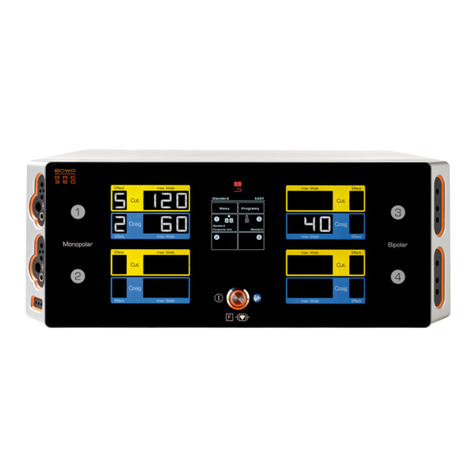
Bowa
Bowa ARC 350 User manual
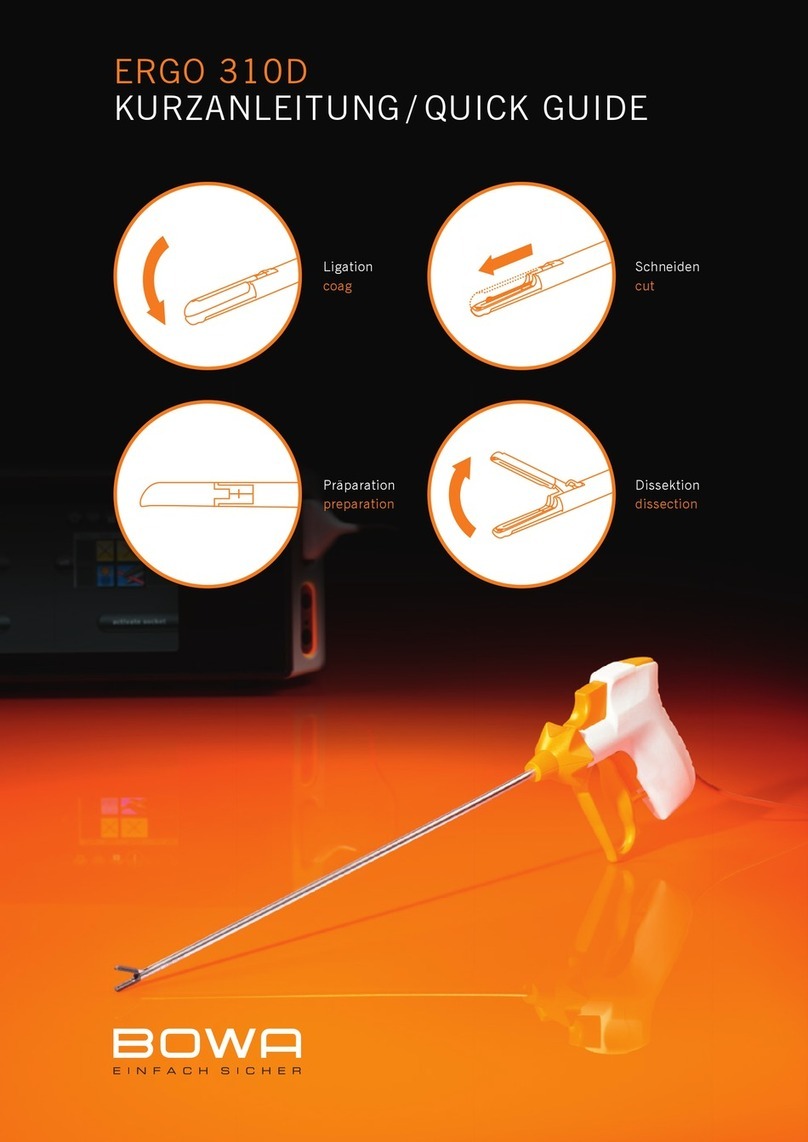
Bowa
Bowa ERGO 310D User manual
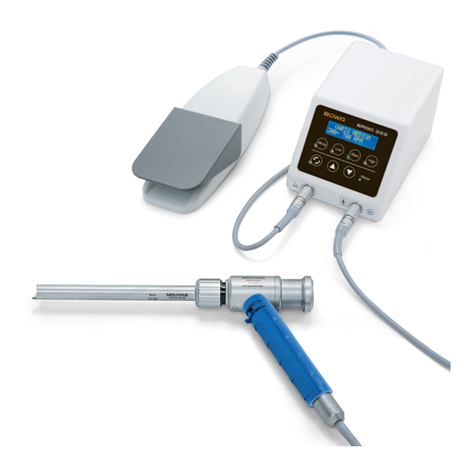
Bowa
Bowa ERGO 300 User manual
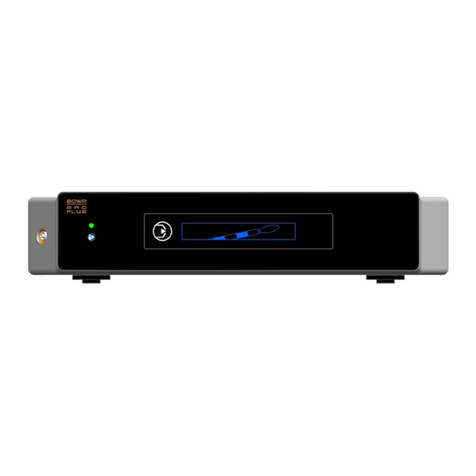
Bowa
Bowa ARC PLUS User manual

Bowa
Bowa ERGOact User manual
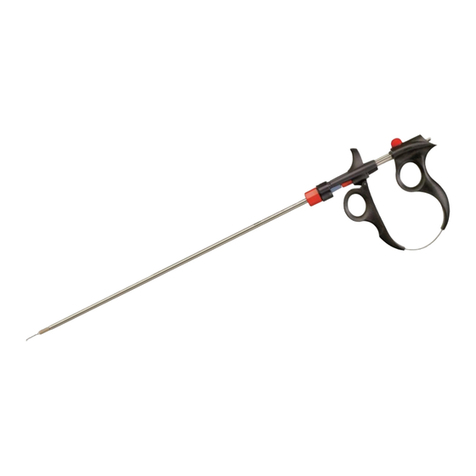
Bowa
Bowa ErgoLAP BIPOLAR User manual
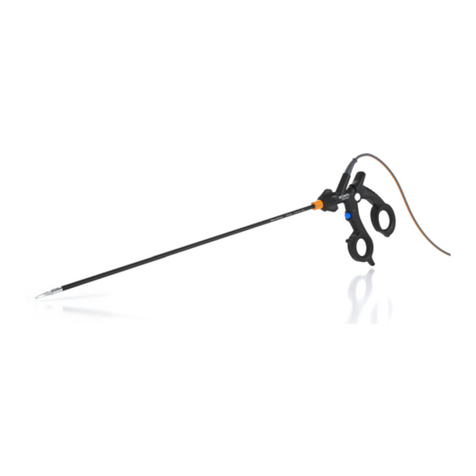
Bowa
Bowa ERGOact User manual
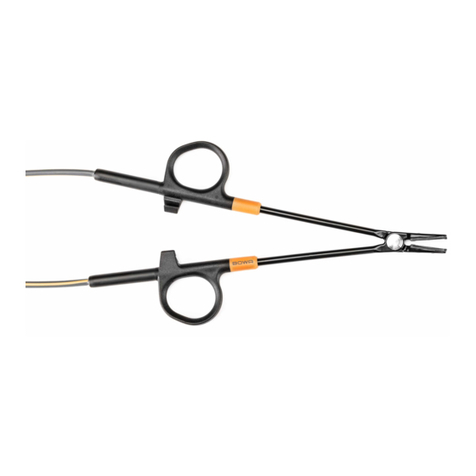
Bowa
Bowa TissueSeal PLUS COMFORT User manual
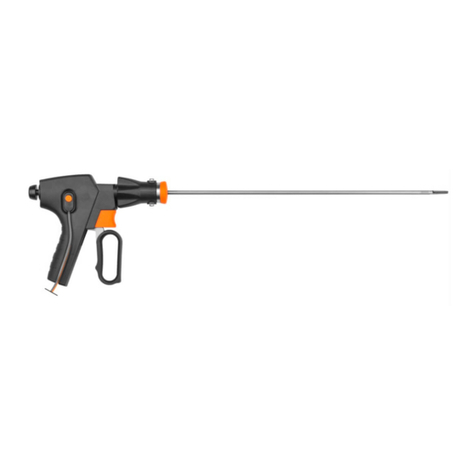
Bowa
Bowa ERGO 315R User manual
Popular Medical Equipment manuals by other brands

ulrich medical
ulrich medical Pezo PEEK cage Series Assembly and disassembly instructions with special cleaning instructions

Bestcare
Bestcare BestLift Luna Technical Service
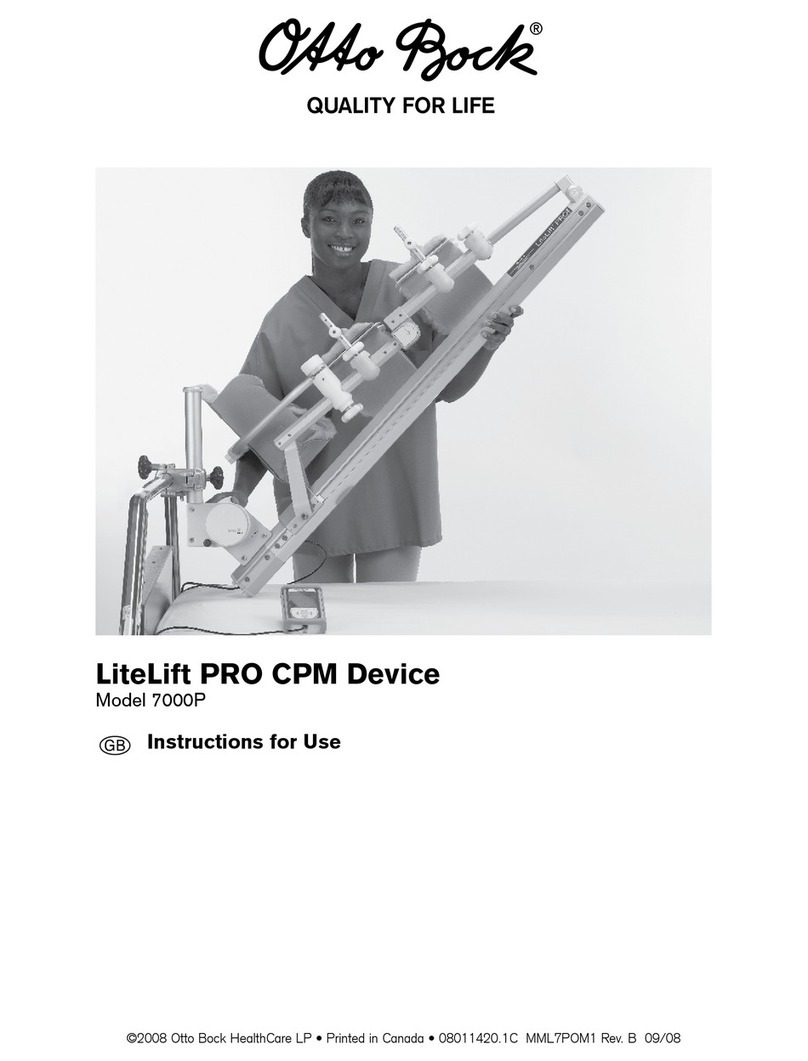
Otto Bock
Otto Bock 7000P Instructions for use
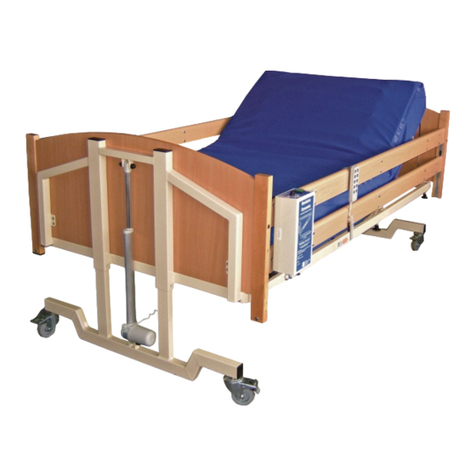
sidhil
sidhil BARIATRIC DYNAMIC User instructions
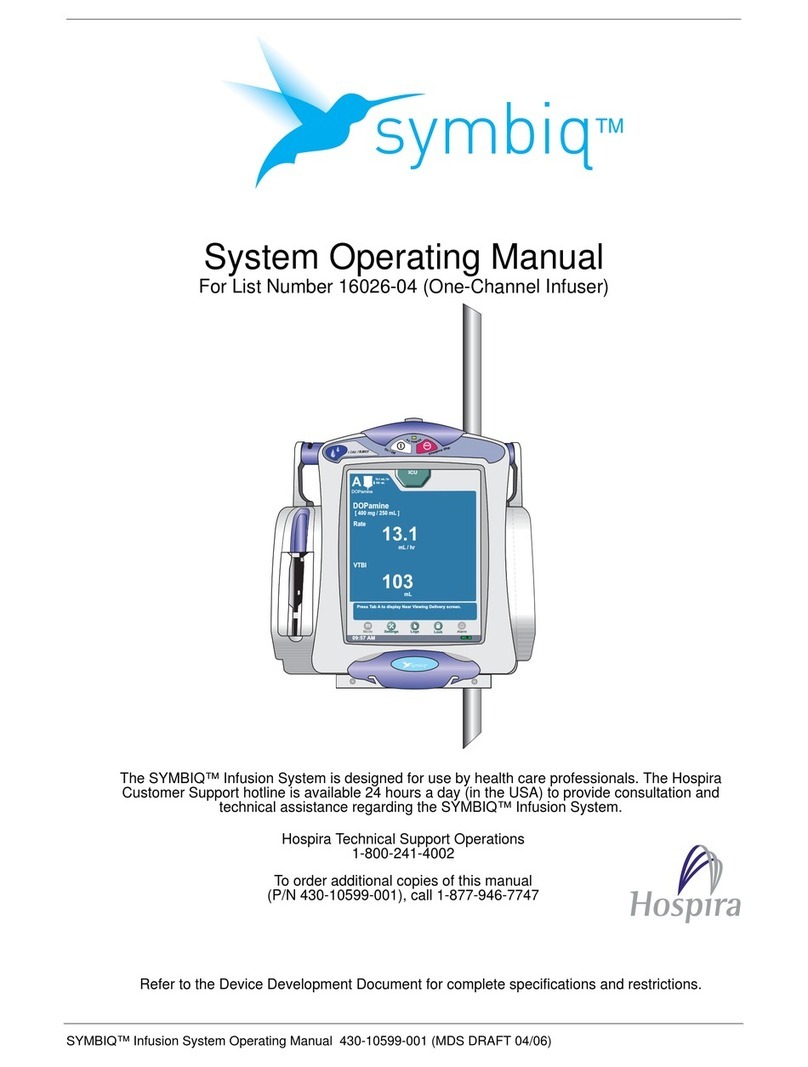
Hospira
Hospira Symbiq System Operating Manual
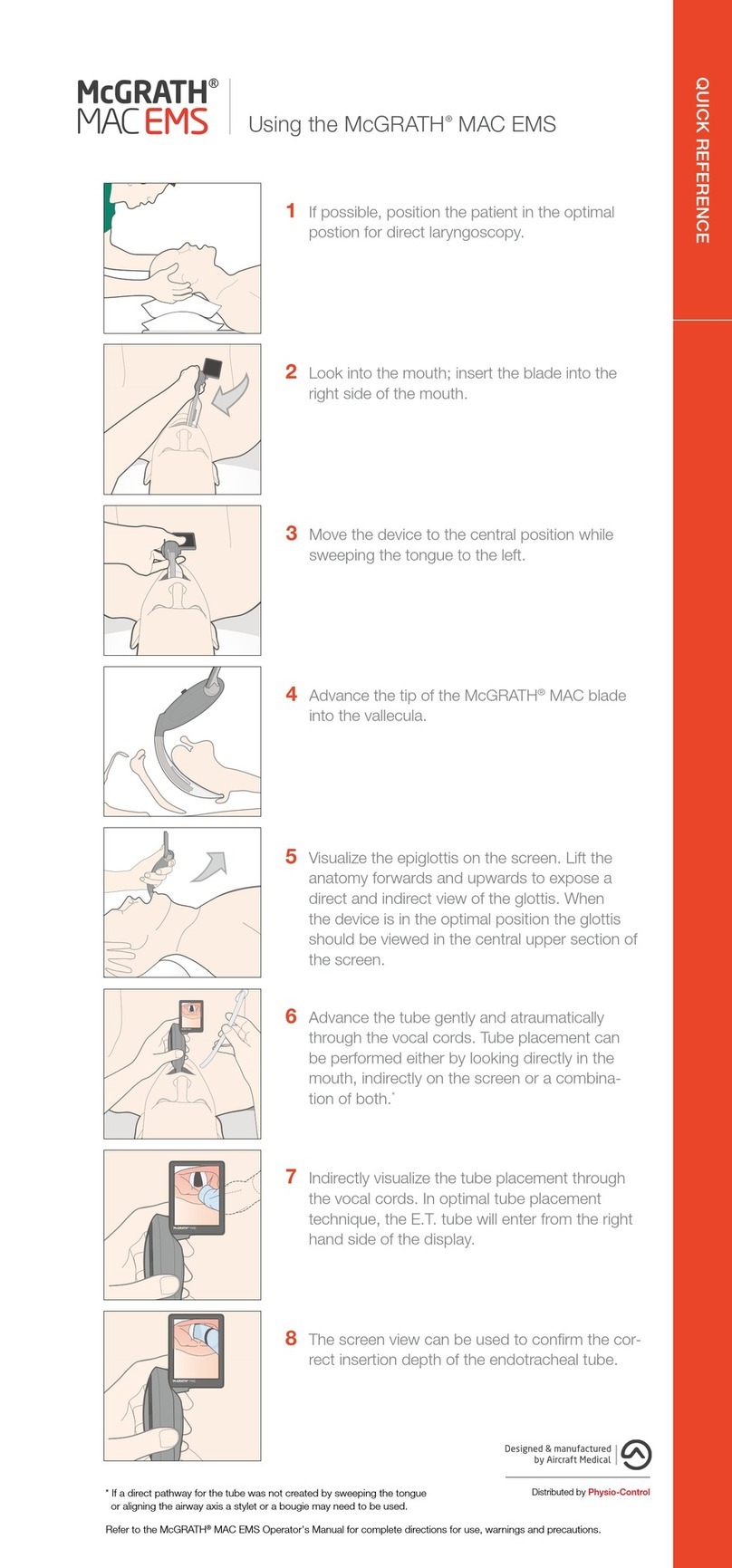
McGrath
McGrath MAC EMS quick reference
